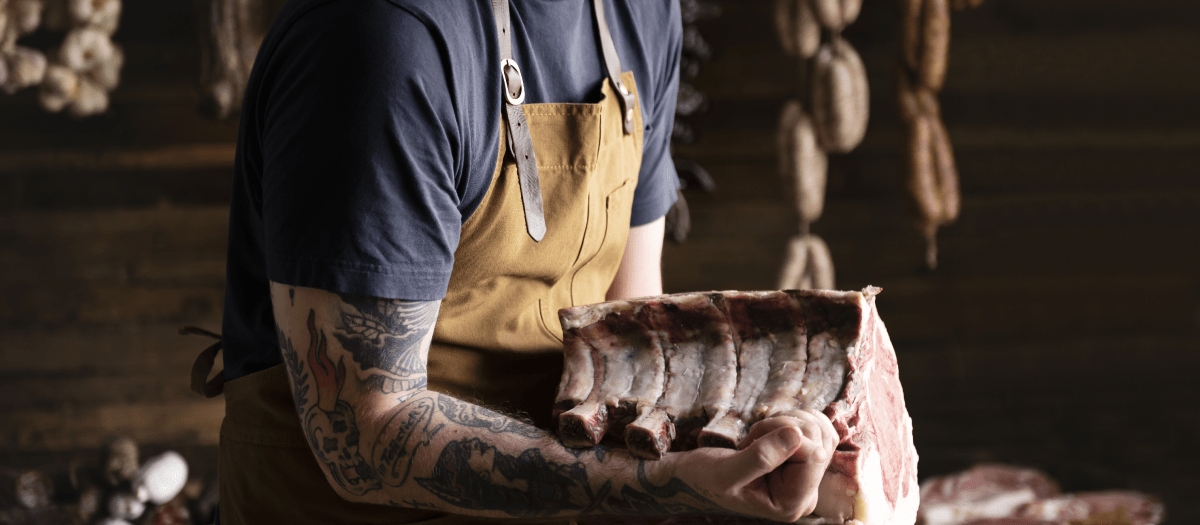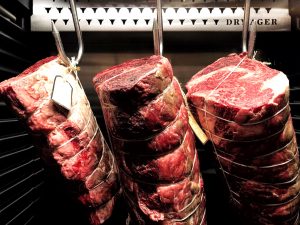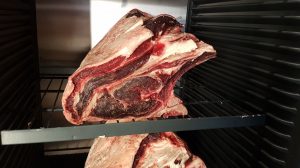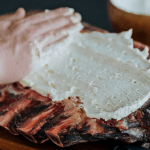The Best Cuts of Meat to Dry Age

Dry aging meat is often considered a fine art. Creating the perfect balance of flavour and texture, allowing its decomposition to the perfect point, these things take skill and dedication to the details. And one of the most important details is the cut of meat used, as this can make a huge difference to the end product. After all, a great artist uses the best tools available to him to create something amazing.
So what type of meat works best with dry aging?
One key point that you may find surprising, is that dry aging will often work best on less luxurious cuts of meat. Because dry aging brings out hidden flavours and textures within the meat, less prime cuts will often show the greatest transformation, as well as being more cost-effective than say – aged eye fillet.
Another point to consider, is that the cut you choose to dry-age should have a large proportion of fat content. It is best to procure a sub-primal that has a good fat cap or a lovely ribbon of fat in the "eye" as this aging fat is what imparts the umami, that indescribable particular flavor/aroma to dry aged meat. The fat is reduced by the bacterial process, enriching and adding flavour to the cut of meat, and protecting it from drying out throughout the process. If your meat has bones in it, this can also prevent it from drying out.

It’s not advisable to try dry-aging single steaks because you will lose so much volume when cutting off the outer, dried layer that you won’t be left with much. Especially as the moisture loss cause by the dry aging process also makes the steak shrink. Most butchers typically age full or sub-primals for the best effect.
Some of the commonly dry aged cuts include strip loin (New York Strip), boneless ribeye (ribeye) and top butt (sirloin). These are steak cuts that age well and improve significantly in flavor and texture with dry aging.
However, your dry aging journey need to be limited to just beef. Pork can also be dry aged with great success. Cuts from certain breeds lend themselves excellently to the process.. Particularly suitable is meat from the Mangalitza pig, because it is very aromatic and has a higher fat content.
The natural flavour of the meat from the pig Magalitza is greatly improved by maturation on the bone, becoming much richer and more decadent.
... brings out hidden flavours and textures within the meat ...
If you are feeling adventurous even poultry can be dry aged. Meat experts have successfully tested this with black feather chickens. The Dry Aging intensifies the poultry taste and the slightly firmer meat of free-roaming animals gains a delicate texture but remains wonderfully juicy. The colour of the animal changes slightly, becoming darker and the meat after 14 days is significantly drier. Once prepared, it becomes soft as butter and wonderfully aromatic.

To truly understand how much the dry aging process is capable of elevating otherwise pedestrian cuts of meat, it’s important to use the type of meats that lend themselves to the process.
But be adventurous – try out any of your favourite large, fatty cuts and become amazed at the results. Try dry aging fish, and taste the difference for yourself!
You may be interested in:

Dry Ager goodness, delivered fortnightly.
Join the meat press
Copyright © 2025 Dry Ager Australia & NZ
Website by SILVERLANE™
CONTACT US
Distributor for Australia & NZ
e: sales@dryager.com.au
p: 1300 113 115
Opening Hours
Monday to Friday 8am - 4:30pm




